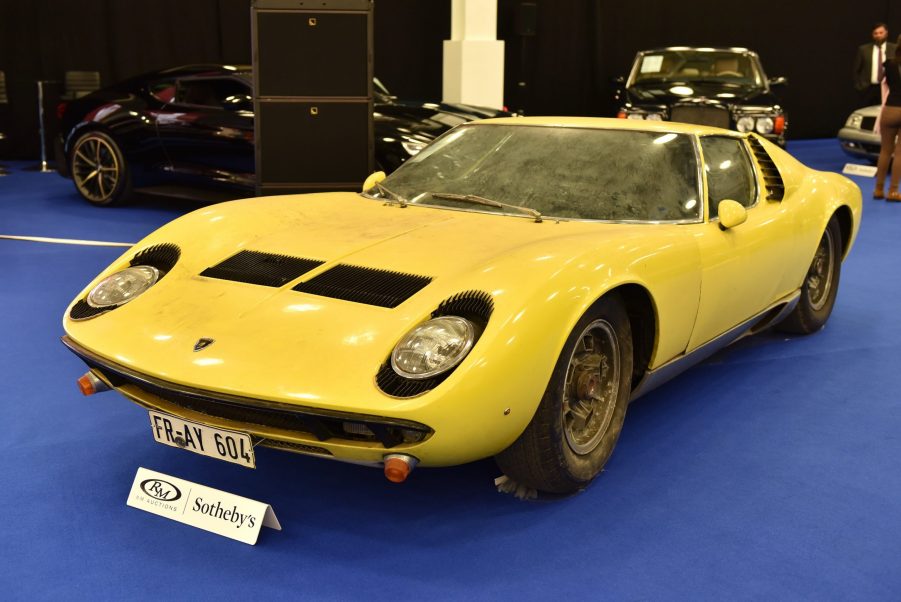
What is a Blue-Chip Collectible Classic Car?
History and emotion play huge roles in the classic car world, determining not just what’s collectible, but valuable. And whether or not you subscribe to the notion of classics as investment opportunities, their potential is impossible to deny. However, even within the sphere of rarefied vintage wheels, some stand above the rest: the blue-chip classic cars. But what exactly are they?
From poker chips to stocks to collectible classic cars, a ‘blue-chip’ item always keeps its value

Firstly, the term ‘blue-chip classic car’ has nothing to do with semiconductor chips or paint colors. But it does have everything to do with a specific car’s market value. And you can thank the stock market and gambling for that.
Historically, the blue chips were the most valuable ones in poker. Now, investing isn’t gambling, though some might argue otherwise. But investing did borrow at least one poker-related term. In financial lingo, a ‘blue-chip stock’ or ‘blue-chip investment’ is one that has a long track record of stability and high value. These are the ‘safe bets’ of the financial world. No matter what happens in the stock market, these stocks will always be the most valuable.
Here’s where we get back to collectible cars. Although some aspects don’t carry over, investing in classic cars bears some similarities to investing in the stock market. Thus, some of the terminologies carried over, including the blue-chip designation.
In short, blue-chip classic cars aren’t just the most valuable collectibles, but ones that are always highly prized. Even as tastes and major buyers change, these cars will always pull in big bucks at sales or auctions.
Which classic cars are considered blue-chip collectibles?
Because blue-chip collectible classic cars are supposed to be immune to market whims, the membership list is understandably exclusive. But there are some broad requirements for entry and a known list of some members.
In terms of market value, there’s no ‘official’ minimum price for a car to be considered a blue-chip collectible. For example, Car and Driver considers cars worth over $500,000 to be blue-chip investments. However, Hagerty’s annual Blue Chip Index, which measures the average worth of the 25 “most sought-after” collectible classic cars, is deep in the seven-figure territory. And while it’s wobbled somewhat, it’s been over $1 million for the past decade.
Admittedly, Hagerty’s Blue Chip Index isn’t the be-all list for blue-chip classic cars. But it is a good starting point for at least a partial overall list:
- BMW 507
- Pre-WWII Bugattis
- Any Ferrari 250, especially a GTO
- Ferrari Testa Rossa
- Lamborghini Miura
- Mercedes-Benz 300SL Gullwing
- Plymouth Cuda
- Original Shelby Cobras
- Toyota 2000GT
Can any vintage vehicle become one?
Note, there are also highly-valuable classic cars that are part of Hagerty’s Blue Chip Index that aren’t necessarily widely-considered ‘blue-chip’ investments. Air-cooled Porsche 911s, for instance, are big right now, but only a select few, such as the original Carrera 2.7 RS, are considered blue-chip models. Remember, it’s stability and big value that earns a car blue-chip status.
As a result, it often takes years for a specific classic car to break into this elite circle. So, just because certain cars, like the ones on Hagerty’s Bull Market list, are rising in value right now, doesn’t mean they’ll earn blue-chip labels. As seen with the new and used car market, it’s not unusual for car values to suddenly crash. Hence why blue-chip status isn’t given out willy-nilly.
However, while it’s difficult for a classic car to get into the blue-chip club, it’s not impossible. It just takes a special combination of historical providence, low production numbers, and cultural impact. The trick for potential investors is figuring out which cars have the ideal blend. After that, you just have to let the chips fall where they may.
Follow more updates from MotorBiscuit on our Facebook page.


